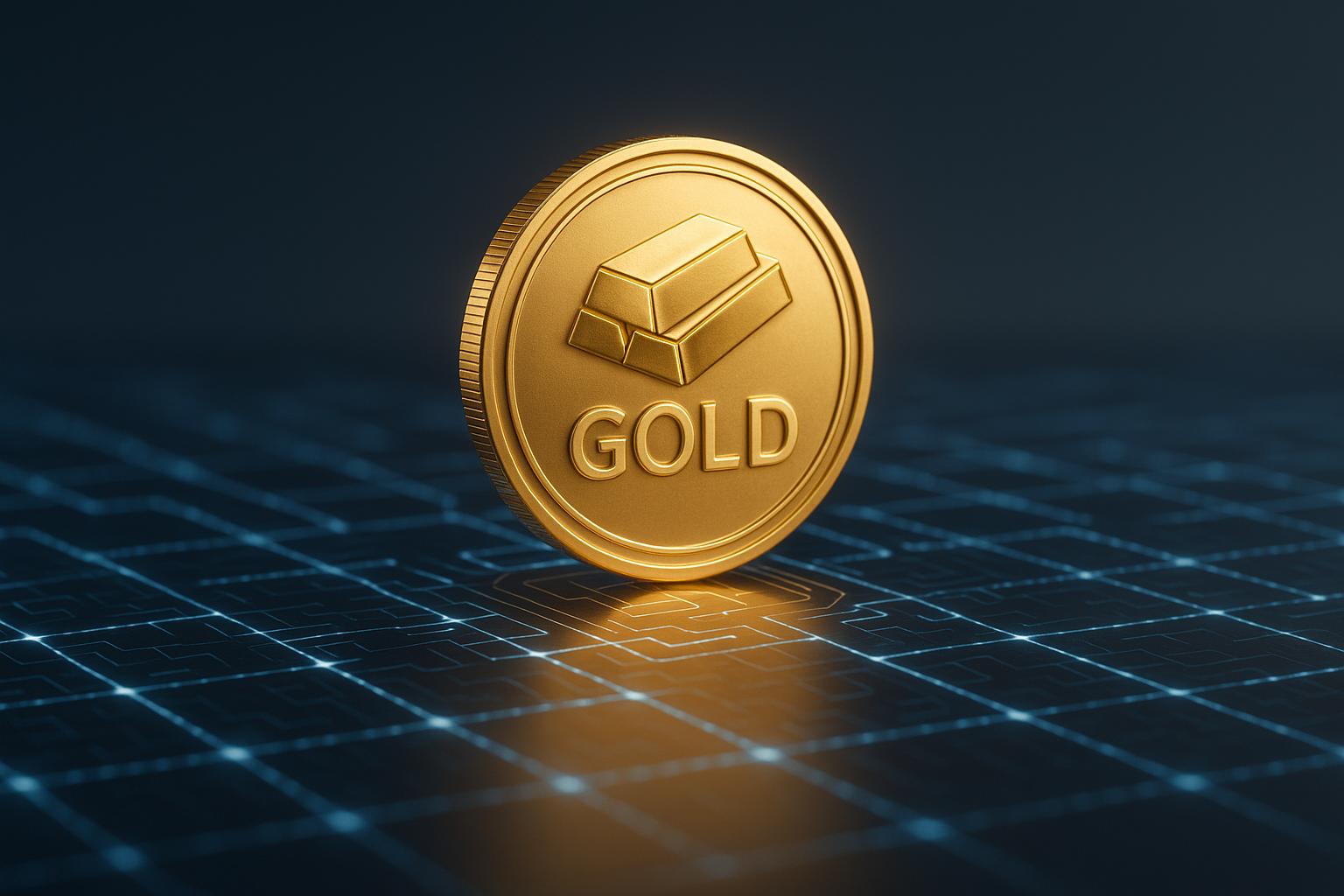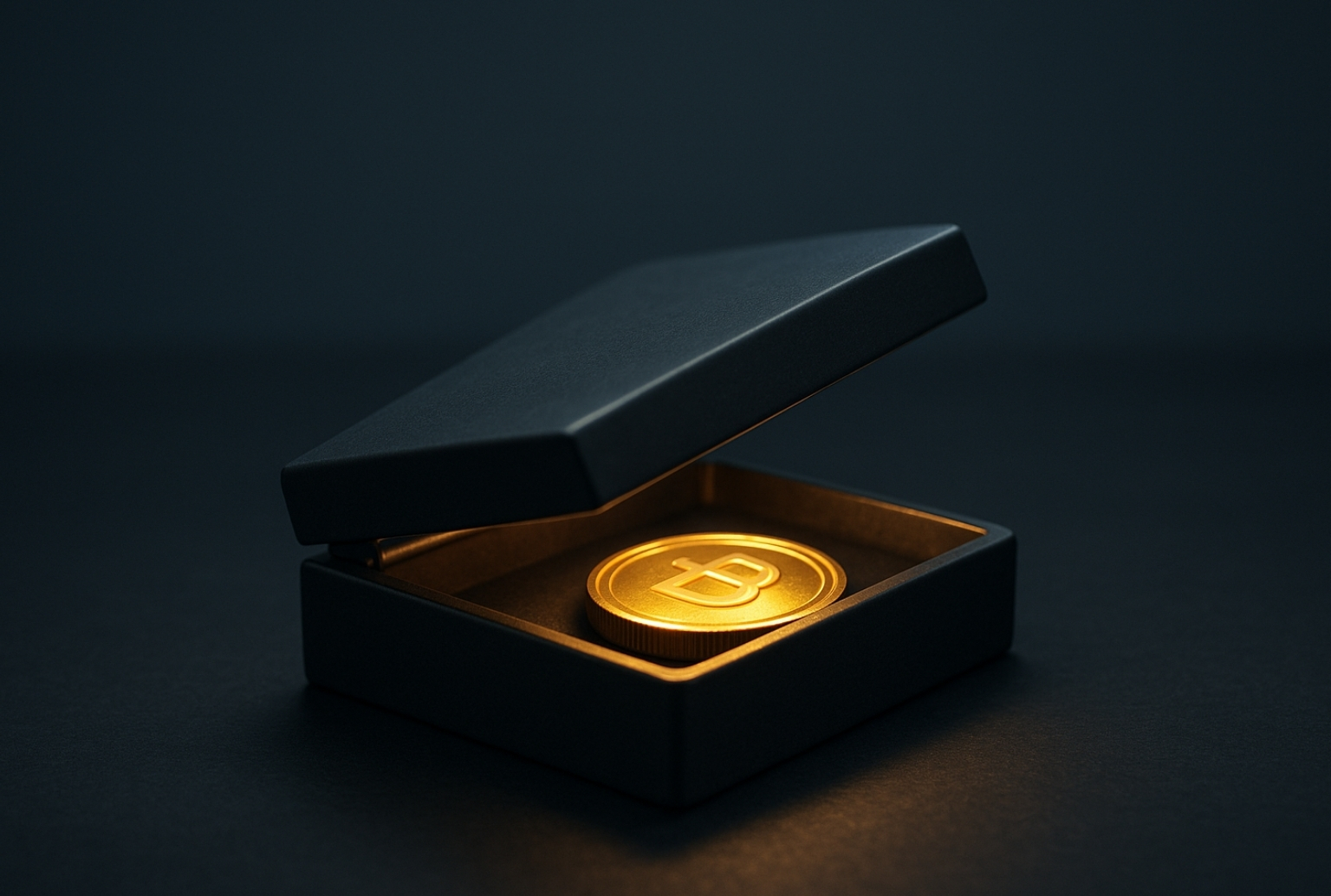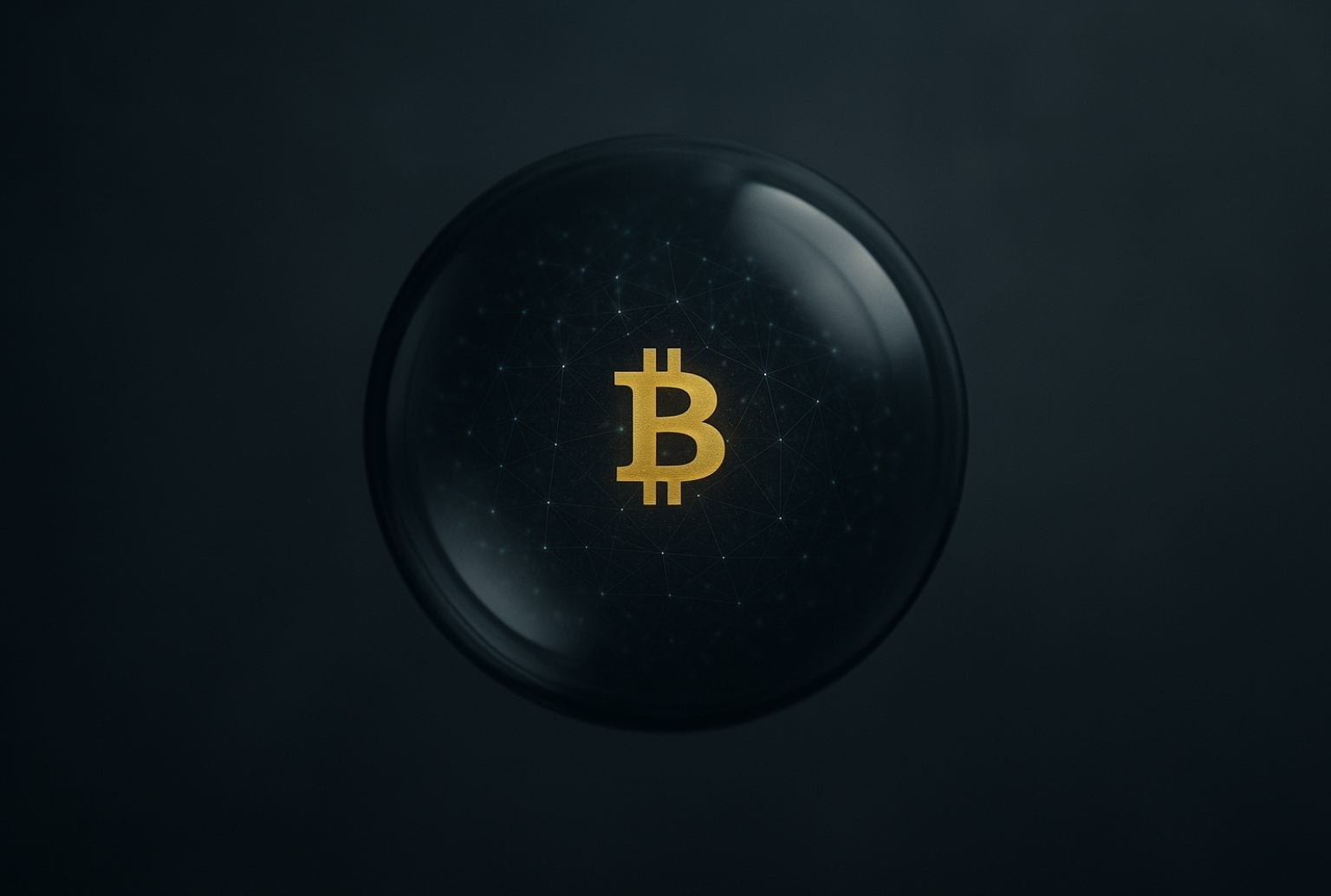How to Buy Tokenized Gold

Tokenized gold lets you own digital tokens backed by physical gold, combining the stability of gold with the convenience of blockchain technology. Here's a quick guide to get started:
- What is it? Tokens represent real gold stored in secure, audited vaults. Options like Paxos Gold (PAXG) and Tether Gold (XAUT) are popular choices.
- Why invest? It offers fractional ownership, easy trading, and eliminates the need for physical storage.
- How to start?
- Choose a trusted platform with strong security, regulatory compliance, and transparent audits.
- Set up a secure wallet (self-custody or exchange-managed).
- Register, complete KYC verification, and fund your account.
- Select your token, review fees, and finalize your purchase.
Tokenized gold simplifies gold investment while leveraging blockchain's transparency and efficiency. Ensure you pick a platform that aligns with your goals and prioritize security.
Gold tokenization: How a gold-backed token is created
How to Pick a Trusted Platform
Choosing the right platform is key to protecting your investment. With the tokenized gold market surpassing $1 billion in capitalization, not all platforms offer the same level of security and dependability.
What to Look for in a Reliable Platform
Security is non-negotiable. Look for platforms that operate on secure blockchains like Ethereum or Binance Smart Chain. Features like two-factor authentication (2FA) and regularly audited smart contracts are essential.
Reputable platforms also store gold in secured, audited vaults and provide transparent reserve reports. Pay attention to whether the platform uses allocated or pooled custody for its gold reserves.
Regulatory compliance is another critical factor. The platform should adhere to U.S. and international digital asset regulations, hold all necessary licenses, and enforce robust Know Your Customer (KYC) and Anti-Money Laundering (AML) policies.
"The regulation of digital assets is essential to secure a safe and stable investment environment." – Gary Gensler, Chairman of the U.S. Securities and Exchange Commission (SEC)
Additionally, ensure the gold reserves are insured against theft or damage, and that token trading can be done efficiently. Before committing, confirm that tokens are fully backed by insured gold, that physical gold can be redeemed if needed, and that the platform’s fees and operational history align with your expectations.
These guidelines can serve as a solid starting point as you evaluate your options.
Top Platform Options
Here are two platforms that meet these standards and are worth considering:
Paxos Gold (PAXG) stands out for its strong regulatory backing and transparency. Each PAXG token is tied to one fine troy ounce of a London Good Delivery gold bar stored in LBMA-approved vaults in London. Regulated by the New York State Department of Financial Services (NYDFS), Paxos offers U.S. investors added peace of mind. They also conduct monthly reserve audits through Withum to ensure accountability.
"Chainlink oracles will accelerate the adoption of Paxos' USD and gold-backed tokens in DeFi." – Walter Hessert, Head of Strategy at Paxos
Tether Gold (XAUT) offers a different storage approach, with its reserves kept in Swiss vaults that meet LBMA "Good Delivery" standards. Each XAUT token represents one fine troy ounce of physical gold. Built on Ethereum, XAUT provides regular reserve attestations to maintain trust. While XAUT may be more budget-friendly for smaller investments, PAXG might be a better fit for larger holdings due to its robust audit and regulatory framework.
When deciding between these platforms, consider factors like your investment size, storage preferences, and fee structures. Each platform has unique strengths that may align with your specific investment goals.
Setting Up Your Wallet
Once you've chosen a trusted platform, the next step is setting up a secure wallet. The type of wallet you use plays a big role in balancing security with accessibility.
Self-Custody vs. Exchange Wallets
Your first decision is whether to manage your wallet yourself or rely on an exchange-managed wallet. Each option comes with its own set of trade-offs.
Self-custody wallets put you in complete control of your private keys, giving you full ownership of your tokenized gold tokens. This approach eliminates third-party risks, meaning your investment is safe from exchange hacks or platform failures. However, with great control comes great responsibility - you’ll need to handle all aspects of security yourself, from safeguarding private keys to managing backups.
On the other hand, exchange wallets take the responsibility of security off your shoulders. The platform holds your private keys and manages security, making it easier to access trading tools and liquidity. But this convenience comes at a cost: custodial risks. You’re trusting a third party with your assets, which could expose you to potential issues like account freezes, withdrawal limits, or even platform failures.
As the saying goes: Not your keys, not your coins.
Here’s a quick comparison of the two options:
| Feature | Self-Custody Wallet | Exchange Wallet |
|---|---|---|
| Security | No third-party risks; self-managed security | Vulnerable to hacks and insider fraud |
| Asset Control | Full control and ownership | Assets held by the platform; custodial risks |
| Ease of Access | Requires effort, especially on DEXs | Convenient access to trading and liquidity |
| Compliance | More private; often outside crypto regulations | Operates under stricter rules, including KYC |
Think of custodial wallets like a bank account - someone else manages your funds. Non-custodial wallets, on the other hand, are like a home safe, offering you complete control. Beginners often find custodial wallets easier to use, while self-custody wallets are better suited for those who prioritize independence and security.
Choosing the Right Wallet Type
Once you’ve decided on a custody style, it’s time to pick the wallet type that fits your needs. Since tokenized gold typically uses the ERC-20 standard, make sure your wallet supports these tokens.
Hardware wallets are the gold standard for security. They keep your private keys offline, protecting them from online threats. For instance, advanced options like the Cypherock X1 use secure elements with EAL6+ certification and split private keys across multiple components using Shamir's Secret Sharing cryptography. Even if you lose up to three components, your assets remain accessible. This makes hardware wallets ideal for large investments.
Software wallets strike a balance between security and convenience. Popular options like MetaMask, Trust Wallet, and Zengo are known for their strong security features and user-friendly interfaces. These wallets are great for smaller amounts or frequent trading.
Ultimately, your choice depends on your priorities. If you’re managing a significant investment, a hardware wallet offers unmatched protection. For day-to-day transactions or smaller holdings, a reputable software wallet may be more practical.
No matter which type you choose, always take steps to secure your wallet. Enable two-factor authentication and store your backup phrases in a safe place to protect your investment.
sbb-itb-d7b5bca
Step-by-Step Buying Process
Ready to buy tokenized gold? The process is straightforward: set up your account, fund it, and complete your purchase.
Setting Up Your Account
The first step is registering on your preferred platform and completing identity verification. This ensures compliance with regulations and typically involves KYC (Know Your Customer) and AML (Anti-Money Laundering) checks.
For individual accounts, you'll need the following:
- Two forms of photo identification
- Proof of address dated within the last 90 days (e.g., a utility bill or tax document)
- A selfie holding your ID alongside a note stating "To Tether", the current date, and your signature.
If you're opening a corporate account, additional documentation is required:
- Certificate of Incorporation
- Memorandum and Articles of Association
- Certificate of Good Standing
- A board resolution authorizing transactions
Additionally, all directors, authorized signatories, and anyone owning 10% or more of the company must provide the same verification documents as individual accounts.
Expect verification fees and varying processing times. To avoid delays, ensure your documents are clear, up-to-date, and match the information in your registration. Once verified, you can fund your account and move on to selecting your tokenized gold.
Adding Funds and Selecting Tokens
After your account is verified, the next step is to add funds and choose your tokenized gold asset. Most platforms accept both cryptocurrency and fiat deposits, offering flexibility in how you finance your purchase.
When choosing a tokenized gold asset, consider the legal framework, asset details, and potential returns. For example, in 2025, Tether Gold (XAUT) reached a market cap of over $806 million, while Paxos Gold (PAXG) hit over $778 million. Each token represents fractional ownership of physical gold reserves.
To ensure the tokens are backed by real gold, review audit reports and attestations that confirm the reserves are securely stored. If you're new to this, consider starting with a smaller investment. You can always increase your holdings as you gain confidence in the process.
Making Your Purchase
Once you've selected your token, it's time to finalize your purchase. Before confirming, review the total cost, including platform fees, network fees, and any spreads. Many platforms provide real-time pricing tied to current gold spot rates, making it easy to see what you're paying.
The purchase process typically involves selecting the amount you want, reviewing the cost, and confirming the transaction. Once completed, the tokens will be credited to your account.
For added security, transfer your tokens to a personal wallet immediately after purchase. This involves copying your wallet address, entering the amount to transfer, and covering the network fees. Using blockchain explorers, you can verify your ownership by checking transaction details and confirming your token balance. This transparent record acts as proof of ownership.
Don't forget to keep detailed records of your purchase, including transaction hashes, purchase prices, and dates. These records are essential for tax reporting and tracking your portfolio.
Fees, Storage, and Legal Requirements
Once you've completed the purchase process, it's essential to understand the fees, storage arrangements, and legal obligations tied to your tokenized gold investment.
Cost Breakdown
Investing in tokenized gold comes with various fees, which can differ based on the platform and the size of your purchase. Common charges include creation and destruction fees, trading fees, and network transaction costs.
Take Paxos Gold, for example. They apply a flat fee for smaller transactions and a tiered percentage fee for larger purchases - ranging from 1.000% for smaller amounts to 0.125% for purchases exceeding 800 PAXG. One notable benefit? Paxos Gold doesn’t impose storage fees.
Tether Gold, on the other hand, has its own fee structure for verified customers. This includes minimum purchase requirements that fluctuate with market conditions. You can save on fees by purchasing tokens through exchange order books rather than directly via the platform’s wallet interface. This approach avoids creation and destruction fees, though standard trading fees and potential price spreads still apply.
Beyond fees, secure storage and routine audits are key to maintaining the integrity of your investment.
Gold Storage and Auditing
The physical gold backing tokenized assets is stored in highly secure, professionally managed vaults, with regular audits to ensure transparency and accountability. For instance, Paxos Gold stores its reserves in secure vaults in London. These reserves are audited monthly by KPMG to confirm that the circulating token supply aligns with the actual gold holdings. Similarly, Tether Gold keeps its reserves in Swiss vaults. As of March 31, 2025, BDO audit reports verified that Tether Gold’s market cap of over $806 million matches the value of gold under its management.
Moreover, blockchain technology offers an added layer of security. It provides an immutable record of ownership, allowing you to verify your holdings and track the total token supply at any time.
U.S. Legal and Tax Rules
In addition to fees and storage, U.S. investors need to navigate specific legal and tax requirements when dealing with tokenized gold. If you use cryptocurrency to make a purchase, it’s crucial to understand that the IRS treats digital assets as property, not currency. This means crypto-to-gold transactions are considered taxable events. Any gains from cryptocurrency used in the purchase are taxable, and when you sell your tokenized gold, you must report capital gains on Form 8949 and Schedule D.
For tokenized gold, long-term capital gains are taxed at a federal rate of up to 28% because it’s classified as a collectible. Short-term gains, however, can be taxed at rates as high as 37%. Additional taxes, like the 3.8% net investment income tax (NIIT) and state income taxes, may also apply depending on your state and income level. On your federal tax return, you’ll need to indicate whether you’ve engaged in any digital asset transactions.
To stay compliant, keep detailed records of your transactions, including crypto acquisition dates, fiat values, token purchase dates, and receipts. If you’re handling frequent or high-value transactions, consulting an accountant experienced in both cryptocurrency and commodities is a wise move.
Conclusion: Start Your Tokenized Gold Investment
Tokenized gold is reshaping how we invest in precious metals by combining the reliability of physical gold with the efficiency and transparency of blockchain technology. This fusion has already fueled significant market growth.
Today, over $1 billion worth of gold is accessible through blockchain platforms, and projections suggest the total market capitalization of tokenized assets could hit $16.1 trillion by 2030, with precious metals playing a major role. Tokenized gold offers the ease of cryptocurrency trading while also providing improved liquidity.
Big players in finance are taking notice. For instance, HSBC has launched a pilot project through its Orion platform, enabling the trading of tokenized gold. This initiative allows fractional ownership for both retail and institutional investors, backed by strong security measures and compatibility across blockchain networks.
The future looks bright for tokenized gold, with increasing interest from institutional investors and deeper integration into DeFi platforms and blockchain ecosystems. However, like any investment, it requires careful consideration. Make sure to assess the credibility and security measures of custodians before diving in. As always, thorough research and caution should guide your decisions.
FAQs
What risks should I consider before investing in tokenized gold, and how can I reduce them?
Investing in tokenized gold isn't without its challenges. Some of the key risks include custodial risks, security vulnerabilities, regulatory uncertainty, market volatility, and potential issues with smart contracts. These factors can influence both the safety and the value of your investment.
To help mitigate these risks, opt for platforms that work with insured and licensed custodians, maintain clear transparency, and adhere to U.S. regulations. It's also crucial to ensure the platform you choose implements strong security protocols, such as audited smart contracts, to protect your assets effectively.
How can I redeem my tokenized gold for physical gold?
Redeeming your tokenized gold for physical gold is simple. Start by submitting a redemption request to the issuer or their authorized agent. After your request is processed, they’ll organize the delivery or collection of your gold.
However, there are a few things to be aware of. Redemption might come with certain conditions, like minimum quantity requirements, applicable fees, or regulatory compliance steps. Take a close look at the issuer’s terms to make sure everything goes smoothly.
What are the tax rules for buying and selling tokenized gold using cryptocurrency in the US?
In the United States, any transaction involving tokenized gold and cryptocurrency is subject to taxation. If you sell tokenized gold and make a profit, you’ll likely owe capital gains tax. Similarly, using cryptocurrency to buy tokenized gold is also taxable since the IRS views crypto transactions as property exchanges.
When it’s time to file your taxes, you’ll need to report these transactions accurately. This typically involves forms like Form 8949 or Schedule D, where you detail any gains or losses. To stay compliant with IRS rules, make sure to keep thorough records of your transactions, including dates, amounts, and the values at the time of exchange.




